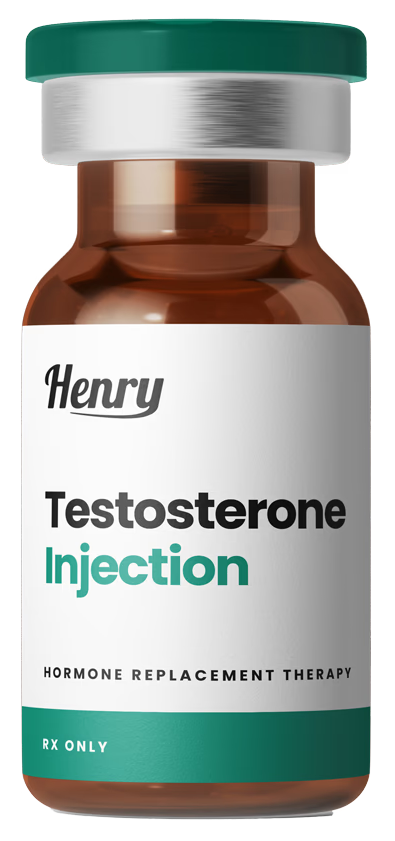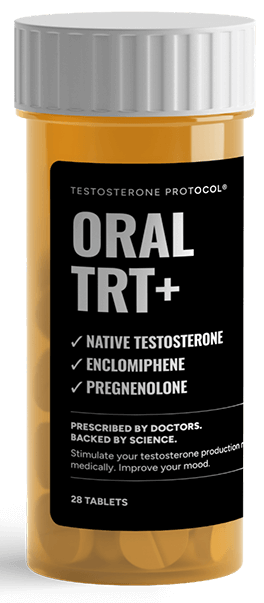Below are the main TRT administration types, each described thoroughly with their unique pros, cons, benefits, and considerations:
1. Intramuscular Injections
Intramuscular injections involve injecting testosterone directly into a muscle, typically in the thigh, gluteal muscles, or shoulder. This method is popular due to its effectiveness and affordability.
Pros:
- Highly effective, predictable absorption
- Typically administered once weekly or biweekly, making adherence manageable
- Relatively cost-effective compared to other methods
Cons:
- May cause fluctuations in testosterone levels between injections (peaks and troughs)
- Discomfort or pain at injection sites
- Potential anxiety or inconvenience related to needles
Considerations & Suitability:
Intramuscular injections are best suited for men who are comfortable with injections and seek cost-effectiveness. They’re particularly beneficial for adults between 30–60 years old who want consistent testosterone restoration but can handle occasional fluctuations.
2. Topical Gels and Creams
Topical testosterone gels or creams are applied directly onto the skin daily, usually on the shoulders, arms, or abdomen.
Pros:
- Simple and convenient daily application without needles
- Provides stable testosterone levels when used consistently
- Easy dose adjustments based on symptoms and testing results
Cons:
- Potential for hormone transfer to women or children through direct skin contact
- Risk of skin irritation or allergic reaction
- Daily application required, posing adherence challenges for some patients
Considerations & Suitability:
Topical gels or creams are ideal for older men (50+) who desire stable, steady testosterone levels without injections. Men who prefer simplicity and flexibility in adjusting doses will benefit most from this method. However, extra caution is required around family members, especially young children.
3. Transdermal Patches
Testosterone patches are worn daily, typically placed on the arm, thigh, back, or abdomen, slowly releasing testosterone into the bloodstream through the skin.
Pros:
- Provides consistent and controlled testosterone delivery
- No risk of transferring testosterone through casual skin contact after proper application
- Non-invasive and easy to manage daily
Cons:
- Commonly associated with skin irritation, itching, or rash
- Daily application and removal required
- Limited dose flexibility compared to gels or injections
Considerations & Suitability:
Patches are best suited for middle-aged and older adults seeking simplicity without injections or gel transfers. Patients prone to sensitive skin or adhesive allergies might want to consider other methods.
4. Testosterone Pellets (Subdermal Implants)
Pellets containing testosterone are surgically implanted under the skin, typically in the buttock area, and slowly release testosterone over 3 to 6 months.
Pros:
- Long-lasting relief with infrequent administration (2–4 times yearly)
- Stable, continuous testosterone delivery with minimal daily management
- Eliminates daily adherence concerns
Cons:
- Requires minor surgical procedure for implantation
- Small risk of infection or pellet extrusion
- Limited ability to adjust dosage until next pellet insertion
Considerations & Suitability:
Pellets are particularly well-suited to busy adults aged 40 and above, or those seeking convenience and stable hormone levels without daily hassle. Individuals comfortable with minor medical procedures and long intervals between treatments are good candidates.
5. Buccal Testosterone Tablets
These tablets are placed between the gum and cheek and absorbed directly through oral tissues, typically twice daily.
Pros:
- Non-invasive method avoiding injections or skin irritation
- Consistent delivery of testosterone levels without peaks and valleys
Cons:
- May cause gum irritation or discomfort in the mouth
- Twice-daily adherence required, potentially inconvenient
- Limited dosage flexibility and adjustments
Considerations & Suitability:
Buccal tablets suit individuals uncomfortable with injections and topical applications who prefer a discrete oral method. However, due to frequent daily administration, younger men (30–50 years) who prioritize convenience might find other methods easier.
6. Oral Testosterone (e.g., Kyzatrex)
Recently developed oral testosterone capsules, such as Kyzatrex, are taken by mouth and provide convenient testosterone replacement.
Pros:
- Easy and convenient oral administration
- Stable testosterone levels with twice-daily dosing
- Reduced risk of hormone transfer to others
Cons:
- Requires twice-daily adherence, potentially inconvenient
- Potential effects on liver function (requires monitoring)
- Limited experience and long-term safety data compared to traditional methods
Considerations & Suitability:
Oral testosterone capsules work well for men in their 30s to 60s seeking simplicity, convenience, and no skin transfer risks. Regular liver function monitoring is advisable, making this method suitable for patients who are diligent about healthcare follow-ups.
7. Selective Estrogen Receptor Modulators (SERMs)
(e.g., Enclomiphene, Clomiphene)
While not direct testosterone replacement, SERMs like Enclomiphene and Clomiphene stimulate natural testosterone production by affecting hormonal signaling pathways.
Pros:
- Preserves fertility, maintaining natural sperm production
- Stimulates body’s own testosterone production
- Lower risk of certain TRT side effects like testicular shrinkage
Cons:
- Less predictable increases in testosterone compared to direct supplementation
- Potential estrogenic side effects (especially Clomiphene)
- Requires careful hormonal monitoring
Considerations & Suitability:
SERMs are particularly beneficial for younger men (20s–40s) who wish to maintain fertility and prefer to avoid external testosterone supplementation. Men looking to boost their body’s own testosterone production naturally rather than directly replacing testosterone often find SERMs appealing.
Making the Right Choice
Choosing the right TRT administration method involves careful consideration of your lifestyle, health goals, age, fertility status, and personal preferences. Younger men aiming to preserve fertility might prefer SERMs or oral testosterone therapies. Middle-aged and older men often benefit from injectable, topical, or pellet forms, which balance convenience, effectiveness, and stability.
Always consult your healthcare provider to tailor your TRT plan to your unique health profile and long-term objectives. A well-informed decision, regular medical supervision, and periodic evaluations help ensure the best possible outcomes from your TRT journey.









